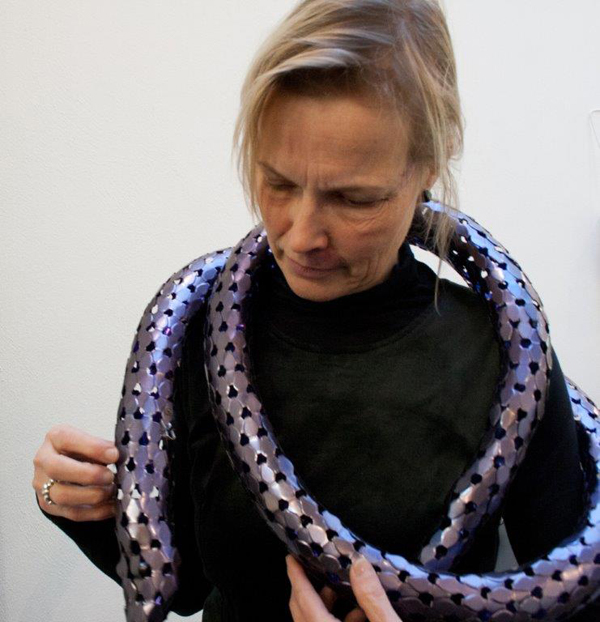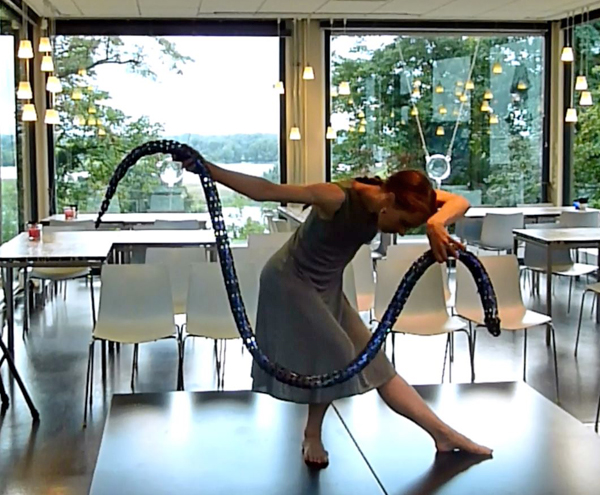
At first glance, this python doesn’t look like a piece of jewelry at all. It is one big object, or rather, it’s a full-grown, life-size snake, dozing in a corner of the room. But once this object is picked up, it tries to engage the wearer in a kind of intimate dance. It won’t sit still, it wants to be moved. Its size and flexibility urge the wearer to repeatedly rearrange it when it’s worn. It demands guidance and protection, ever evading complete control.
To me, the fact that this python doesn’t rely on a string or a chain or a pin to be connected to the body adds a lot to its attraction. Contrary to all the necklaces I’ve ever seen, it isn’t articulated; it appears to consist of only one piece. In this respect, it behaves rather like a garment, like a scarf or like the feather boas that were fashionable during the 20s. Yet its hard and shiny surface makes it stand out against any type of clothing, much like a traditional piece of precious jewelry. In other words, this python is neither a chain, nor a necklace, nor a scarf, but it forms a class of jewelry in its own right.
Of course, a python, as a snake or as a “serpent,” evokes all kinds of associations—with danger, with lure and temptation, sexuality, extravagance; with theatre, with nature and the wild. The realistic scale of this particular python and the object-like appearance of the work even strengthen its associative force. But, above all, it is the sheer beauty of the piece that strikes the viewer at first sight.
In this respect, this python is quite typical of Bielander’s work. With his recent exhibition in Arnhem (then shown in Munich during Schmuck 2014) he clearly claims position within the often-underrated tradition of mannerism. He picks his themes from nature, almost randomly, as genre pieces or clichés. But if his objects capture some of the characteristics of the animal or plant that inspires them, they are never naturalistic in the sense that they would aim to mimic nature. In other words, our intellectual pleasure in seeing them is predicated on the distance that separates this imitation from its source, and the technical ruses employed to “make us believe.” Originality is not to be found in his choice of themes but in his virtuoso use of materials and techniques. His works are not just a celebration of the beauty of nature: They are a clever and witty celebration of craft and of the joy we as humans experience in reflecting upon nature. They are fantastic in the sense that they sprout from human fantasy. They are figurative—but at the same time thoroughly artificial—inventions.





